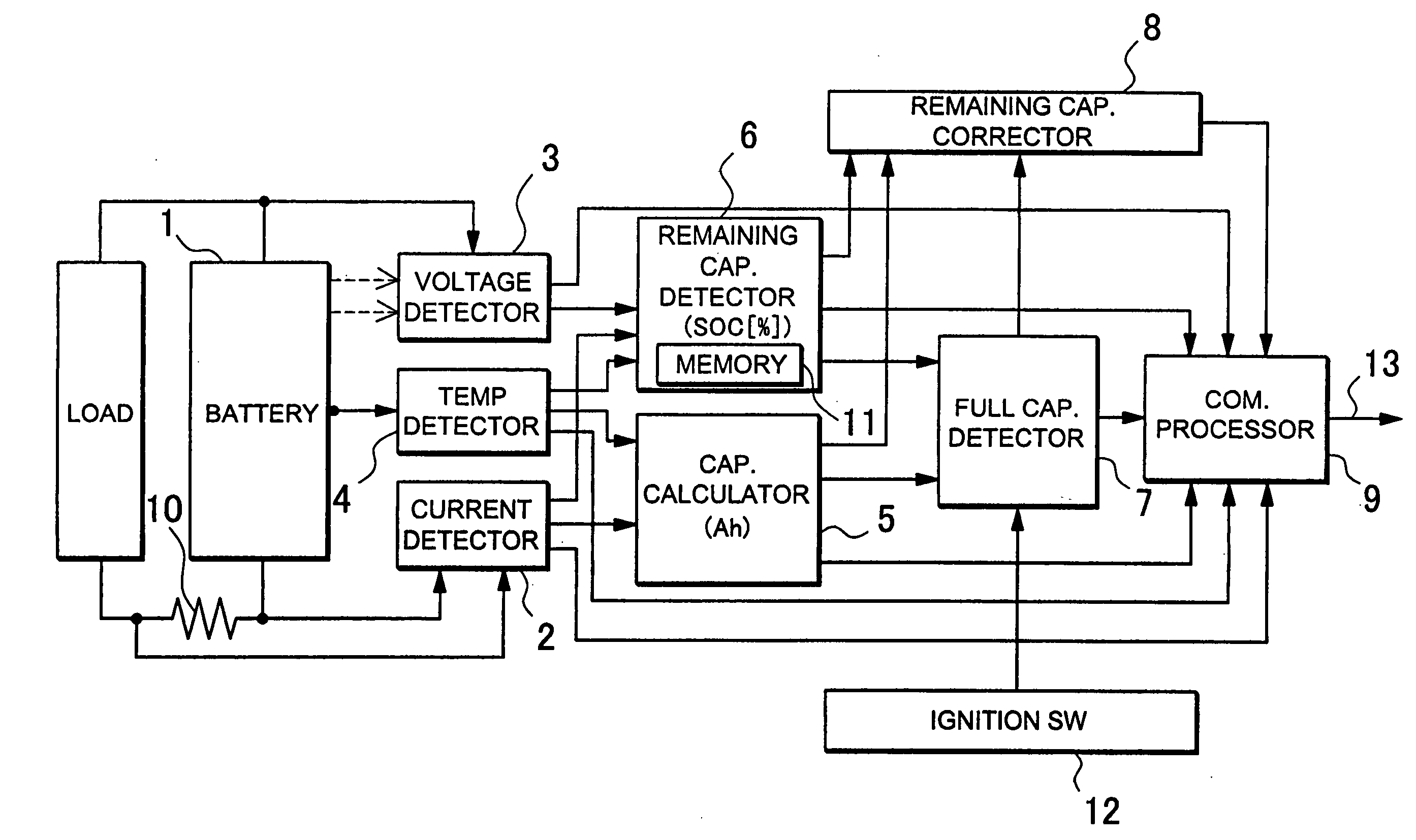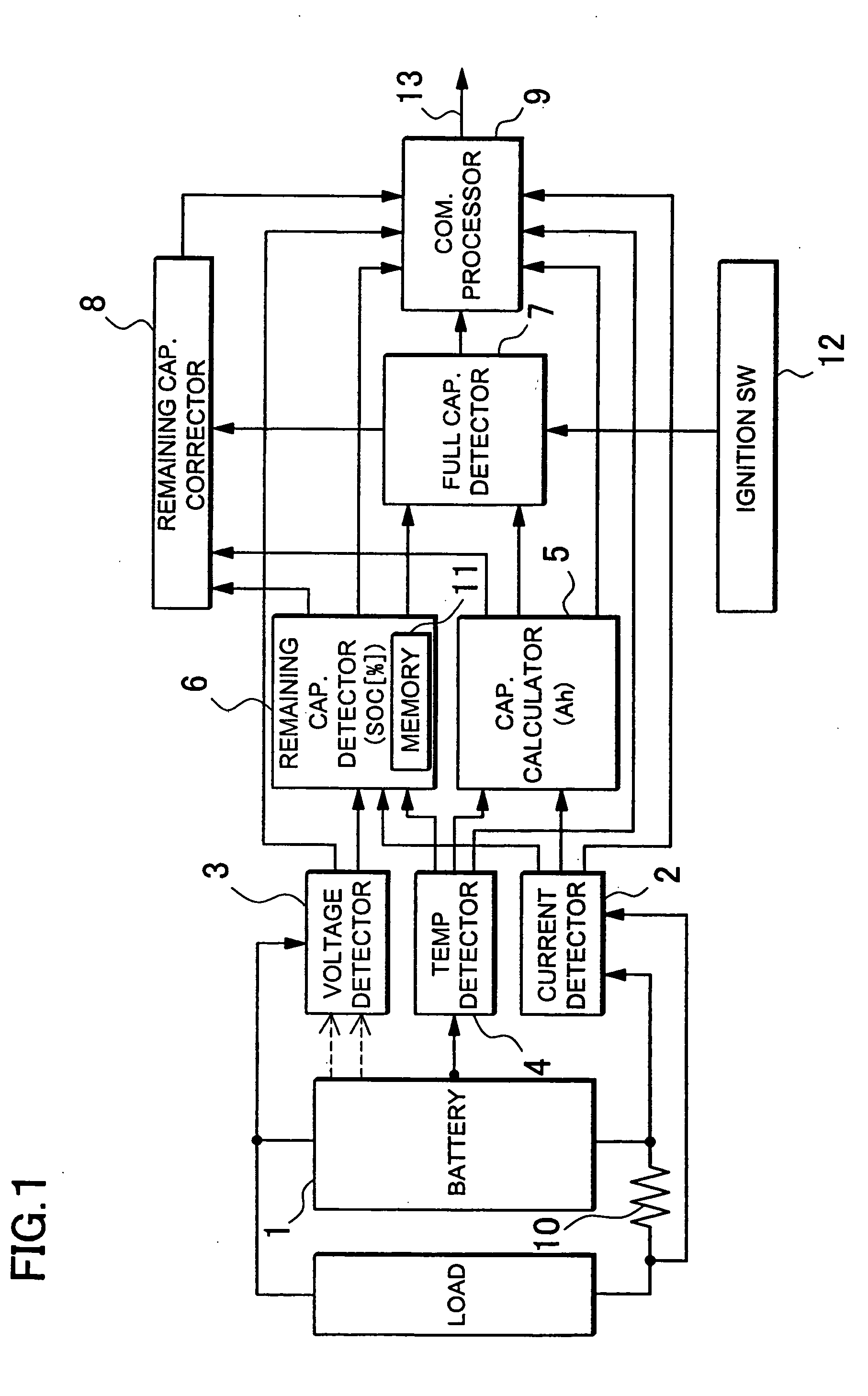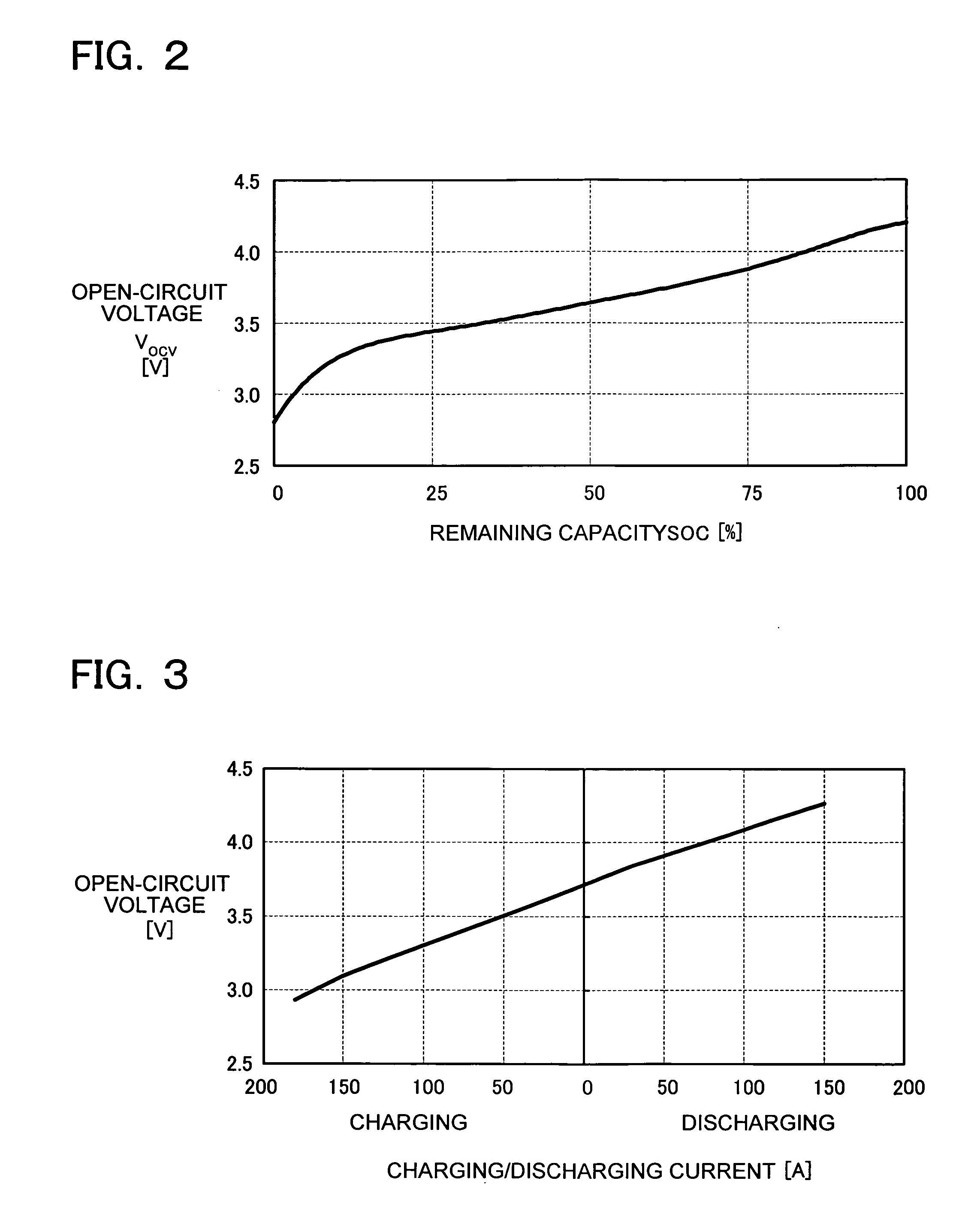Fully-charged battery capacity detection method
- Summary
- Abstract
- Description
- Claims
- Application Information
AI Technical Summary
Benefits of technology
Problems solved by technology
Method used
Image
Examples
Embodiment Construction
)
[0031]FIG. 1 is a circuit diagram of a vehicle power supply device that is used in a fully-charged battery capacity detection method according to the present invention. This power supply device includes a rechargeable battery 1, a current detection portion 2, a voltage detection portion 3, a temperature detection portion 4, a capacity calculation portion 5, a remaining capacity detection portion 6, a fully-charged capacity detection portion 7, a remaining capacity correction circuit 8, and a communication processing portion 9. The current detection portion 2 detects the charging / discharging currents of the battery 1. The voltage detection portion 3 detects the voltage of the battery 1. The temperature detection portion 4 detects the temperature of the battery 1. The capacity calculation portion 5 calculates the output signals of the current detection portion 2 and integrates the charging / discharging currents of the battery 1 to detect the capacity (Ah) of the battery 1. The remaini...
PUM
 Login to View More
Login to View More Abstract
Description
Claims
Application Information
 Login to View More
Login to View More - R&D
- Intellectual Property
- Life Sciences
- Materials
- Tech Scout
- Unparalleled Data Quality
- Higher Quality Content
- 60% Fewer Hallucinations
Browse by: Latest US Patents, China's latest patents, Technical Efficacy Thesaurus, Application Domain, Technology Topic, Popular Technical Reports.
© 2025 PatSnap. All rights reserved.Legal|Privacy policy|Modern Slavery Act Transparency Statement|Sitemap|About US| Contact US: help@patsnap.com



